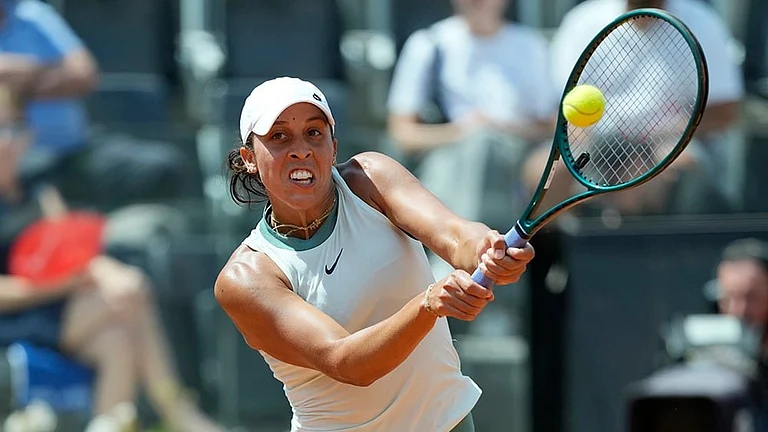On September 28, 2015, Mohammed Akhlaq was brutally beaten and killed in Dadri’s Bisahda village in Uttar Pradesh for allegedly consuming and storing beef. Ten students of CMS College, 2,600 km down south, in Kottayam, Kerala, were suspended for organising a ‘beef festival’ in protest against his murder.
The protests spread across other campuses and many student activists, predominantly from the Left, faced disciplinary action for conducting beef festivals. A month after Akhlaq’s lynching, the Delhi Police raided Kerala House at Janpath in Delhi to ‘confiscate’ beef, the most sought after dish in the canteen there, creating a political storm, with the United Democratic Front (UDF), the Congress-led ruling coalition, and the Opposition Left Democratic front (LDF) joining hands. Oommen Chandy, the then chief minister of Kerala, wrote to the Centre expressing his government’s concern, even as MPs from both the LDF and the UDF staged protests at Kerala House against the police action.
Two years later, in May 2017, Kerala witnessed a massive surge in beef festivals organised across the state by student and youth organisations of both the Congress and CPI (M), in response to the Centre’s ban on the sale of cattle for slaughter. Demonstrations were held in the state and beef was cooked and served on the road, with people coming in large numbers to eat beef.
Were all of them registering a protest? It doesn’t matter, because beef is just irresistible in this part of the country.
Kerala has consistently stood united against any move to bring the ‘holy cow discourse’ into politics as a divisive tactic. If one has to pick single most sinificant factor that binds Keralites together irrespective of their political and religious affiliations, it is nothing other than their quintessential love for ‘beef and parotta’, a combination dish popularly identified as the epitome of the Malayali idea of food. Even the Bharatiya Janata Party (BJP) in Kerala doesn’t dare demand a ban on cow slaughter or beef eating. Instead, they offer ‘quality beef’ if elected. N. Sriprakash, the BJP candidate in the 2017 by-election to the Malappuram Lok Sabha seat, which had fallen vacant due to the demise of E. Ahmad, an Indian Union Muslim League MP, promised ‘good beef’ to people if voted to power.
The cow is just another animal in this southern state.
The Malayali Appetite for Beef
The famed Malayali appetite for beef is not something that has developed in the recent past. According to historians, beef-eating existed here at least since the 3rd century, the Sangam period. There are several references in ‘Sangam literature’ indicating that there were no religious restrictions on the consumption of meat. Hanu G. Das, assistant professor of History in Union Christian College at Aluva in Ernakulam, who has researched the evolution of food culture in Kerala, observes that vegetarianism was brought by the Buddhist ideology. “It has nothing to do with the concept of purity, but it was all connected with the idea of ahimsa (non-violence),’ he says. Consuming meat, even cow meat, was not a sin for the Brahmins. Das explains that there are references in the Rig-Veda, Manusmriti and Taittiriya Upanishad establishing the fact that animal sacrifice was practised by the Brahmins and Vaishyas. The meat of such animals, including the cow, was consumed.
“Brahmin community started practising vegetarianism as part of their battle with Buddhism. They discouraged animal sacrifice and meat eating to compete with Buddhism and capture the respect and prominence enjoyed by Buddhist religion in society,” Das adds. The ideology preached by Sankaracharya played a decisive role in placing vegetarian food at the top of the hierarchical social order. Eventually, meat was demeaned as ‘impure’ to be consumed only by people lower in the caste hierarchy.
Kerala has a history of foreign trade and international relations that go back to the 3rd century, as the region had trade links with other civilisations including the Arabs and Greeks. Islam arrived in Kerala in the 7th century, along with the diverse cultures of the Arabs. The root of Christianity in Kerala is believed to be as old as the religion itself. St Thomas, one of the apostles of Christ, is believed to be the founder of the religion in Kerala. Later came the Portuguese, the French, the Dutch and finally, the British. Kerala’s affluent history of cultural exchange begins much before the arrival of Vasco da Gama in 1498.
However, the cow had attained the ‘holy’ status by the time the Portuguese arrived. P. Bhaskaran Unni, the author of 19th Century Kerala, informs us in his book that the King of Cochin entered into a pact with da Gama to not kill cows or buy cow meat. However, the majority of the population, the OBC, Dalit, Muslim and Christian communities, largely consumed all sorts of meat. “The cow was considered divine only by the upper caste, predominantly the Brahmins, who were a minority. The rest of the population continued to eat beef,” Das tells Outlook.
In the 19th century, the Ezhava community, a backward caste, were allowed to raise cows, but they could not milk them. The right of milking cows rested with the upper caste Nairs. Any lower caste person who violated the code was subjected to severe punishment. The history of Kerala’s resistance to the ‘holy cow politics’ also begins in the 19th century. In 1875, a group of Ezhavas in Cherthala, in present-day Alappuzha district, protested against the ban and broke the code by milking a cow. Though the members of the Nair community sent ‘goondas’, the Ezhava youth outnumbered them.
Neither Divine Nor Religious
The ‘newl-found love’ for cow urine in the rest of the country does not attract the Keralites, either, because urine and cow dung have been used in Ayurvedic medicines since ancient times. There is no surprise then that Patanjali products could not create much sensation in Kerala as it did in other states. However, the quality of the products was found questionable. According to Jaya V. Dev, Deputy Drug Controller (Ayurveda), the department conducted raids when it received complaints about the quality of the Patanjali products. “I
understand that many of Patanjali outlets were shut down in the state. Their claim of curing Covid caused a lot of apprehension among the people and thus we intervened,” Dev tells Outlook.
The medicinal use of cow urine and dung has nothing to do with right-wing politics in Kerala. People who follow Ayurveda, irrespective of their religion, consume such medicines. For example, ‘panchagavya’, said to be made of five cow products, including milk, cow urine and dung, is prescribed for mental illness. There are Ayurveda hospitals and medical colleges run by the state government, which prescribe medicines with such cow products as ingredients. Speaking to Outlook, Dr Parvathi Devi, principal of the Government Ayurveda Research Institute for Mental Diseases at Kottakkal, says, “There are some medicines prepared in cow urine; there are a few others to which cow urine is added as an ingredient. Such medicines are used for certain physical and mental conditions as swelling, abdominal discomfort, depression, epilepsy and so on.” Dr Devi is also a member of the State Mental Health Authority.
“People do not really care for the ingredients of a medicine. There is nothing unusual about using cow products including cow urine in very little quantity in Ayurveda medicines. It has nothing to do with religion,” says Dr M.M. Abdul Shukkoor, superintendent of the Government Ayurveda College at Tripunithura, Kochi.
Shelters Aplenty for the Holy Cow
The popular image of Kerala’s love for beef has often been portrayed as disrespect to the ‘holy cow’. This is far from the truth. The state has gaushalas (cow shelters) for protecting cows which are offered to temples by devotees. The five temple administration (devaswom) boards in Kerala run 10 such shelters across the state. The largest one is run by the Guruvayur Devaswom Board in Malappuram, the only Muslim-majority district in Kerala. “We have three gaushalas. The one at Malappuram is a 100-acre campus with around 300 cows,” Vijayan, president of Guruvayur Devaswom, tells Outlook.
The Guruvayur and Travancore Devaswom boards have three cow shelters each and the Cochin Devaswom Board has two. Some temples also maintain shelters. However, there are allegations against Devaswom boards for poor maintenance of cow shelters.
A 3 Billion Dollar Industry
As the beef industry is mostly run in the unorganised sector, the Economics and Statistics Department of Kerala does not have accurate data on the volume meat consumption and its pattern in the state. However, the figures provided by the market players are mind-blowing. “Beef is a 3 billion dollar industry in Kerala,” says Sanju Mohammed, promoter of Buffalo Mart, a livestock farm that runs its beef business in the southern states. “More than 90 percent of the business is run in the unorganised sector by local markets,” Mohammed tells Outlook. The majority of the cattle required for the industry is brought from other states as Kerala does not have enough livestock to meet the requirement. Hence, beef is more expensive than chicken.
Mohammed does not agree with the popular notion that connects beef eating with cow slaughter. “Kerala’s favourite beef is not cow meat but buffalo meat,” he says.
Whatever be the price, beef does not cease to be a favourite dish. “We start delivering beef dishes from morning. People of Malabar love to have beef with pathiri (thin bread made of rice powder) and parotta for breakfast,” says Jayaraj, manager of Paragon Hotel in Kozhikode, one of the most popular non-vegetarian restaurants in Kerala. On average, his hotel serves 50–60 kg beef on a daily basis.
The massive migration of Malayalis to the Gulf countries and Europe since the 1960s has brought drastic changes in the food culture of Kerala. Arab food, of which meat is an integral part, has become the new normal both in the urban and in the rural Kerala.
It’s not politics but health reasons that can change the mindset of a Malayali when it comes to beef eating. The prevalence of non-communicable diseases, such as high-cholesterol and diabetes, is unusually high in the state. People of Kerala avoid beef only on a doctor’s advice, not for the ‘holy cow politics’.
(This appeared in the print edition as "Just Another Animal")


























